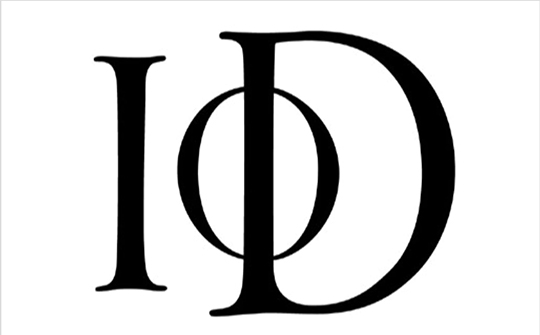IoD responds to latest hike in employment figures.
Responding to latest official employment figures, showing the unemployment rate rose to 4.5%, Tej Parikh, Chief Economist at the Institute of Directors, said:”Job losses are likely to keep mounting as this turbulent year draws to a close.

“With the furlough scheme unwinding, cash-strapped firms have been forced into difficult decisions about retaining their staff.
“Demand remains weak and as restrictions ramp up again many businesses will be stretched when it comes to paying wage bills.
“The Job Support Scheme may need to be beefed up if the Government wants to avert further rises in unemployment.
“The pick-up in vacancies offers a spot of relief. But while the UK’s flexible labour market has helped ensure high employment over recent years, it will surely need more support now.
“The Government should boost retraining courses, encourage start-up activity, and help SMEs to retain staff with a reduction in Employers’ NICs.”
LATEST EMPLOYMENT FIGURES FOR NORTHERN IRELAND.
Labour Market Statistics
The labour market statistics were published today by the Northern Ireland Statistics & Research Agency.
Proposed redundancies almost doubled over the year
- 8,860 collective redundancies were proposed in the twelve months to the end of September, almost double the number recorded in the previous twelve months. Record high numbers were recorded in June and July, and this is now translating into confirmed redundancies, with almost 2,000 redundancy notifications received in the last three months.
- During September, 1,150 redundancies were proposed, an increase on the previous month’s total of 700, and 460 redundancies were confirmed, a decrease from the total of 820 confirmed in July. A further 570 were proposed in the current month to 12th October.
NI Claimant Count (Experimental Series) remains above 60,000 for fifth month
- In September 2020, the seasonally adjusted number of people on the claimant count was 62,000 (6.7% of the workforce). This remains unchanged from the previous month’s revised figure and is the fifth month that the claimant count was above 60,000; levels previously seen in 2012 and 2013.
Payrolled employees decreased and employee earnings increased over the month
- The number of employees receiving pay through HMRC PAYE in NI in August 2020 was 742,300, a decrease of 0.3% over the month and 0.7% over the year. The flash estimate for September shows an increase of 0.2% on August’s figure to 744,000.
- Earnings from the HMRC PAYE indicated that NI employees had a median monthly pay of £1,749 in August 2020, an increase of 0.3% over the month and 4.0% from the same time last year. The flash estimate for September shows an increase of 0.5% on August’s figure to £1,757.
Highest quarterly increase in NI unemployment rate since October 2012
- The latest NI seasonally adjusted unemployment rate (the proportion of economically active people aged 16+ who were unemployed) for the period June-August 2020 was estimated from the Labour Force Survey at 3.7%. The unemployment rate increased over the quarter by 1.2 percentage points (pps) and by 0.8pps over the year. The quarterly change was statistically significant, i.e. the recorded change exceeded the variability expected from a sample survey of this size and was likely to reflect real change.
- The proportion of people aged 16 to 64 in work (the employment rate) decreased over the quarter by 0.3pps and over the year by 0.8pps to 70.6%. Although recent changes were not statistically significant, the employment rate was significantly above rates in 2017.
- The economic inactivity rate (the proportion of people aged 16 to 64 who were not working and not seeking or available to work) decreased over the quarter by 0.7pps and increased over the year by 0.2pps to 26.6%. Although recent changes were not statistically significant, the economic inactivity rate was significantly below rates in 2017.
- Put into the context of the UK, NI has the lowest employment and unemployment rates and the highest economic inactivity rate of all the UK regions.
New data from HMRC’s Pay As You Earn (PAYE) Real Time Information System released for the first time for Northern Ireland today shows a fall of 1.7% in the number of paid employees between March and April.
Since then there has been a small increase in the number of paid employees, however, the September total remains 1.3% lower than in March and 0.4% lower than September last year.
The claimant count (experimental) shows a continuation of trends since May and remained above 60,000 in September, more than double the number in March.
Following record high proposed redundancies in June and July (4,410), the pace of proposed redundancies slowed somewhat in August (700), but exceeded 1,000 in September.
In line with the upsurge in proposed redundancies between April and July the number of confirmed redundancies has totalled almost 2,000 in the last three months.
Labour Force Survey data for the earlier period of June-August shows the unemployment (3.7%) rate increased, and the economic inactivity (26.6%) and employment (70.6%) rates decreased over the quarter.
There has been some recovery in the total number of hours worked across the economy; increasing by 6% over the most recent quarter after the record fall of 18% between December-February and March–May.
That said, the total number of hours worked per week during June-August remains 13% below, and the employment rate is 1.8 percentage points below, that at the beginning of 2020.
The increase in the unemployment rate of 1.2pps to 3.7% between March-May and June-August is notable as the largest quarterly increase since 2012.
The data indicates that the increase was driven by those under 35 years. Within this the youth unemployment rate (16-24 years) doubled to an estimated at 11.8%.


























